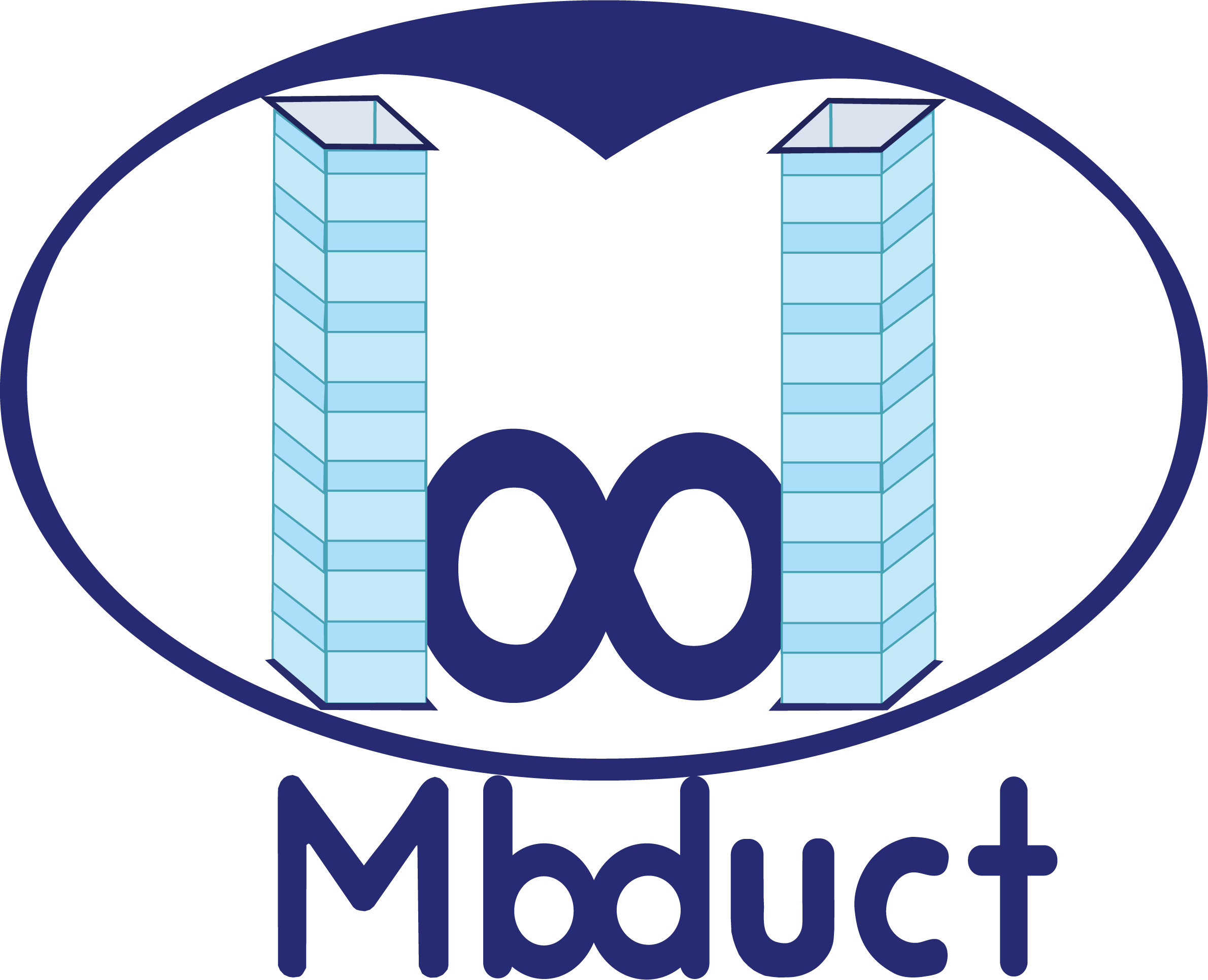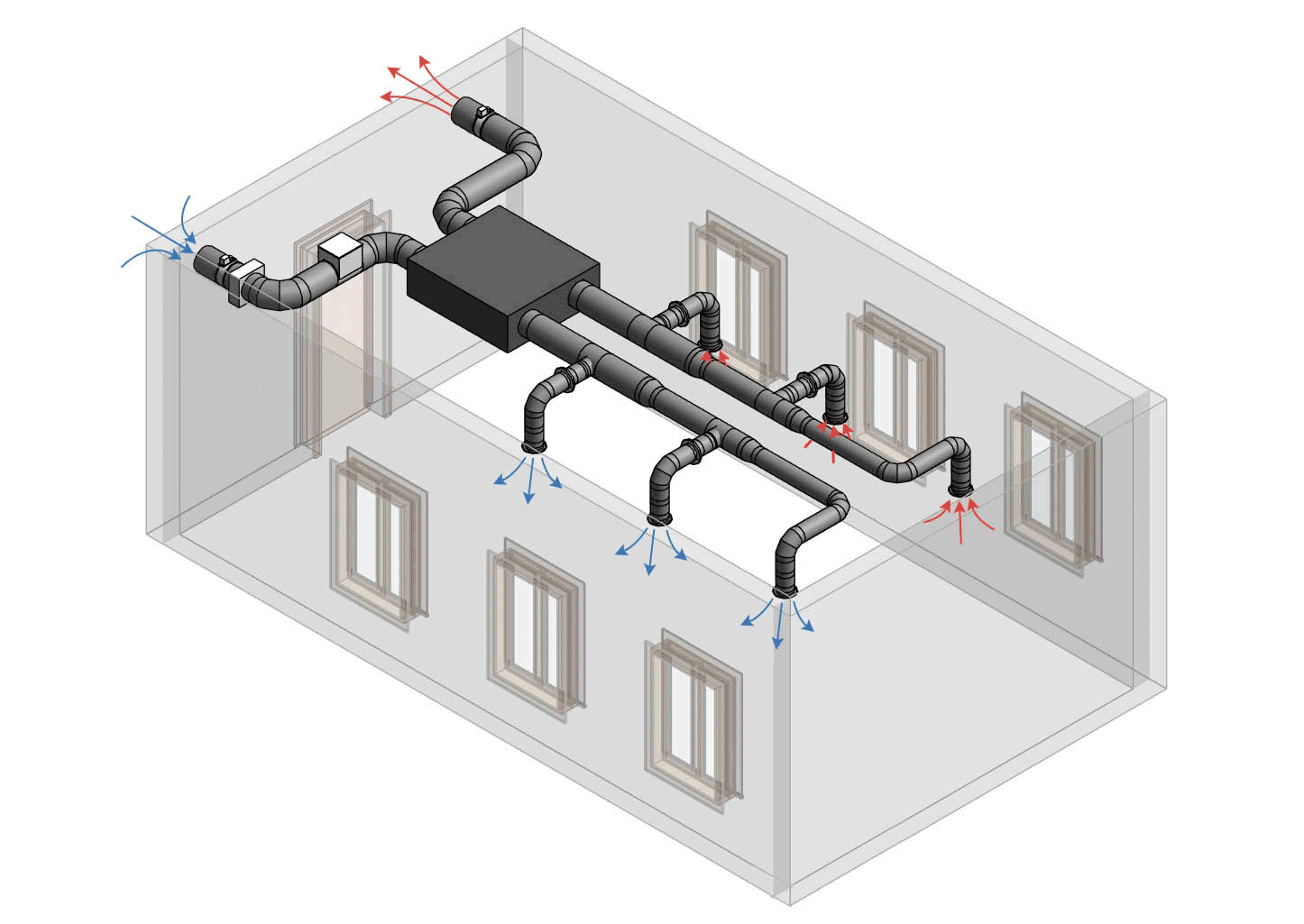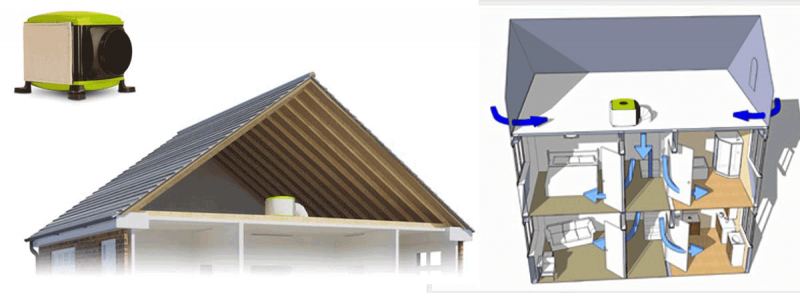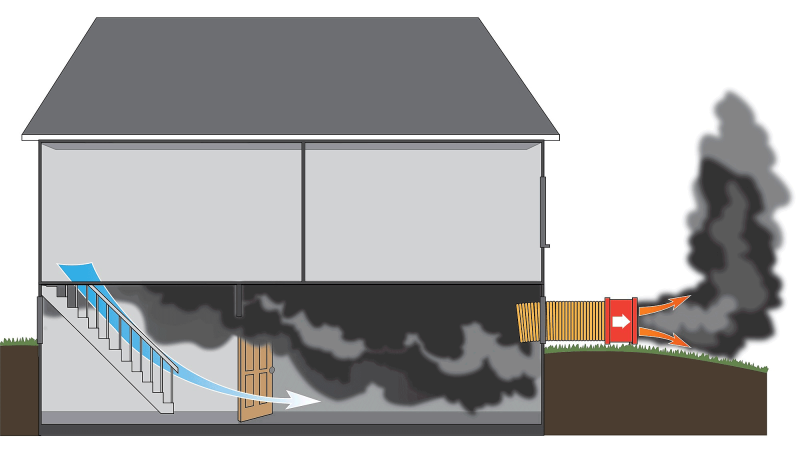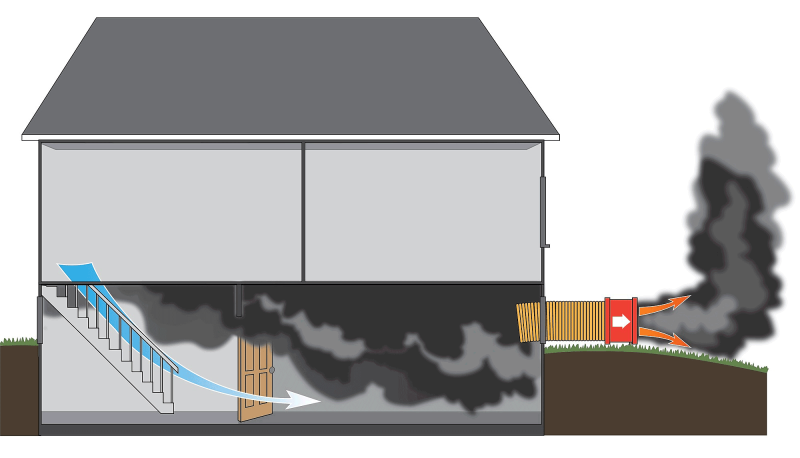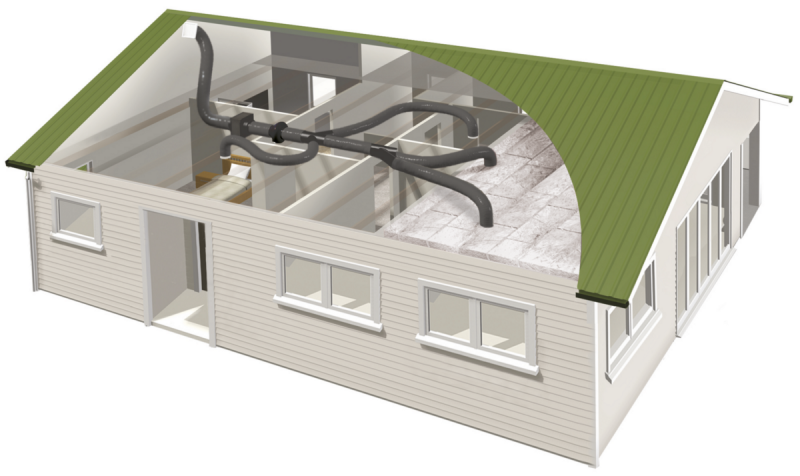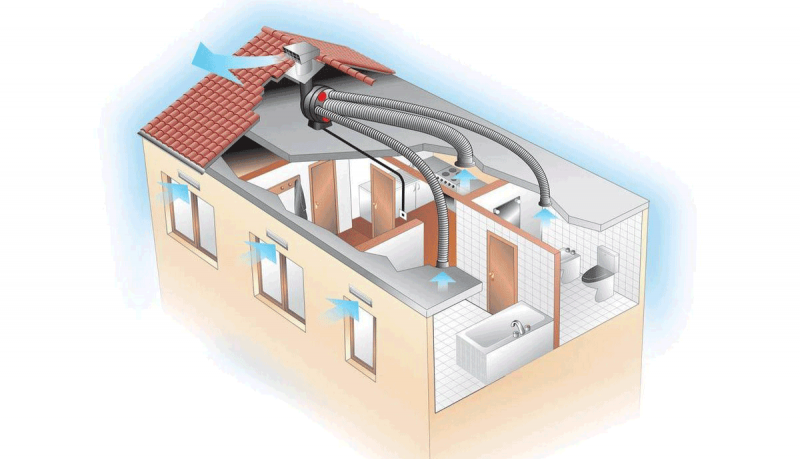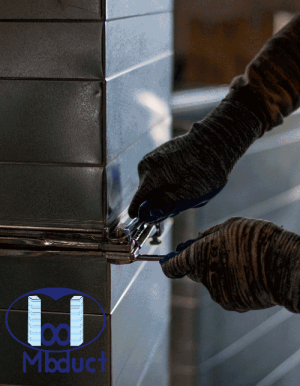Positive and negative pressure ventilation is one of the highly important subjects in today’s construction industry.
Positive Pressure Ventilation
The Concept of Positive Pressure
In general terms, positive pressure refers to controlling the infiltration of pollutants by introducing air into sensitive areas. Currently, positive pressure has gained special importance following the Plasco incident, leading the Fire Department to establish stringent regulations and laws regarding the presence of positive pressure flows within buildings. According to these regulations, buildings over 23 meters or 6 stories must utilize positive pressure systems.
Consider a room. Positive pressure within a room implies that the incoming air from the outside is greater than the outgoing air. It is crucial that the incoming air is as purified and fresh as possible. To achieve this, relevant equipment must be employed. Positive pressure not only aids in the dispersion of smoke and fire but also contributes to fire extinguishment.
The smoke evacuation system (also known as positive pressure fans) functions by activating a staircase fitted with smoke or fire sensors. By creating a pressure difference between the fire-affected area and the floors, the spread of fire within the building is hindered. This system also provides occupants with a smoke-free escape route. Additionally, when the smoke evacuation system or positive pressure fan provides a clear pathway, firefighting teams can easily access the fire location, extinguishing it with minimal damage to the building in the shortest possible time.
How the Positive Pressure System Works
The smoke evacuation system (positive pressure fan) is installed in the stairwell. It creates a pressure differential between the floors, levels, and stairwells, separating the air of two distinct environments. This arrangement causes air to move from the stairwells towards the interior of the units, ensuring the staircases remain safe for residents and firefighters to pass through. Moreover, this pressure differential allows individuals residing on higher floors to safely descend to lower levels during a fire, avoiding gas and smoke poisoning.
The Components of the Positive Pressure Fan System
- Electric motor
- Housing
- Shaft and wheels
Categorization of Positive Pressure Fans in Buildings
Positive pressure fans in buildings are broadly divided into two main categories:
- Positive Pressure System with Direct Injection of Fresh Air
- Positive Pressure System with Networked Injection of Fresh Air
- Positive Pressure System with Direct Injection
Positive Pressure System with Direct Injection
This method is a very straightforward approach to generating positive pressure. For required and sensitive passageways, a centrifugal fan is installed, and upon its activation, it directly introduces fresh air from the outside into the passage (duct). Imagine designing positive pressure for a warehouse; for this purpose, you would install a centrifugal fan at the entrance of the warehouse to blow outside air into the interior.
Positive Pressure System with Networked Injection
This method is more precise and targeted than the direct injection approach. It involves creating channels to guide fresh air using a device to desired locations, and then, through suitable vents, directs the air into the room.
Negative Pressure Ventilation
Concept of Negative Pressure
Negative pressure ventilation refers to the extraction of fire products (smoke, hot and toxic gases) towards the exterior of a building. In this configuration, a fan acts like an air exhauster, pulling away smoke, hot and toxic gases, as well as air pollutants.
Disadvantages of Negative Pressure System
One of the drawbacks and challenges of this system is the contamination of the fan or device, leading to undesired effects on the impeller and electric motor (such as accumulation of grease, smoke particles, and heat damage). In general, implementing negative pressure ventilation can lead to damage to the fan. As previously mentioned, substances like grease, smoke, and soot, along with the vapors resulting from combustion and heat, can have adverse effects on the fan motor.
Fans placed in corridors or pathways obstruct the entry or exit of firefighters and make it difficult. Therefore, it is necessary to suspend the fan from a window in the pathway or secure it using hooks. Consequently, when an exhaust fan is used at the fire scene, the internal pressure of the building becomes negative.
Another drawback is the hindrance of verbal communication. Internal building fans are insufficient and inadequate for expelling pollutants from the building. In the case of negative pressure ventilation, smoke and hot and toxic gases are directed outside through openings via a reduction in internal pressure facilitated by the exhaust device. This is achieved by drawing smoke out.
Functioning of Negative Pressure
The negative pressure system operates by creating a pressure differential, where the pressure inside the area of interest is lower than the surrounding atmosphere. This encourages the movement of air and smoke from the high-pressure region (fire area) to the low-pressure area (outside). Fans or exhaust devices play a crucial role in establishing and maintaining this pressure differential, facilitating the extraction of fire products to a safer environment.
In negative pressure systems, the air inside the room is drawn outwards. Air is allowed to enter through a gap under the door (approximately 1.25 cm). Apart from this gap, the rest of the room must be completely sealed and airtight, with no air entering from window sills, frames, or other openings. Any leakage from these sources can result in the loss of negative pressure within the room.
Advantages of Positive Pressure Ventilation Compared to Negative Pressure Ventilation
- When placing fans, individuals are not exposed to hazardous pollutants.
- Pollutants do not pass through the fan, thus avoiding undesired effects on the fan apparatus and blades.
- Positive pressure ventilation is suitable for expelling pollutants present in high, low, and corner areas of the building environment.
- Positive pressure ventilation is at least twice as efficient as negative pressure ventilation in expelling pollutants and toxic substances.
- External fans do not require additional equipment or auxiliary tools to operate.
- External fans do not significantly increase noise or disrupt communication.
- Firefighters can enter the fire scene in a standing position instead of crawling.
In conclusion, it can be inferred that the positive pressure ventilation system offers greater advantages compared to negative pressure ventilation. Utilizing this system is more beneficial from both engineering and economic perspectives.
